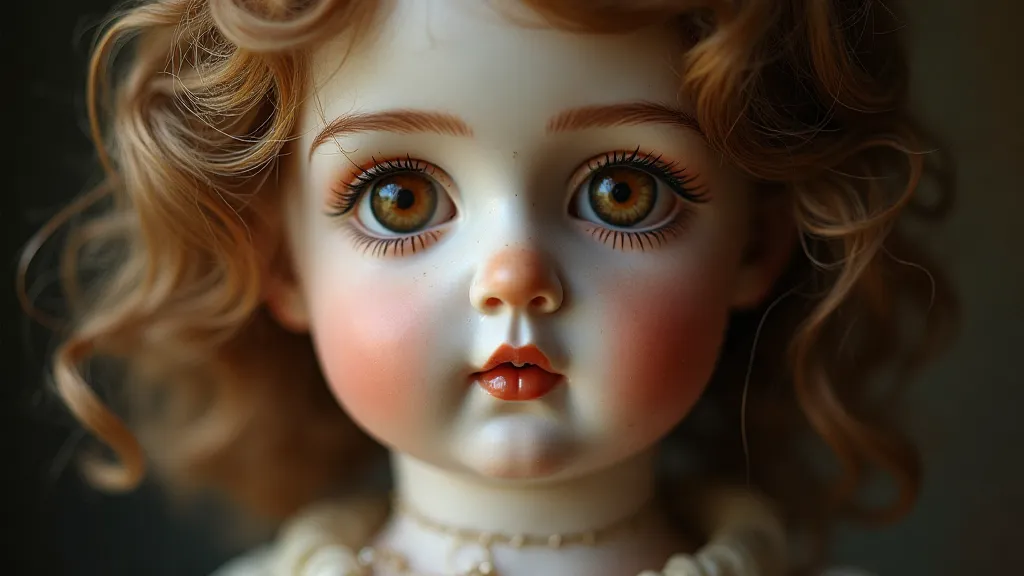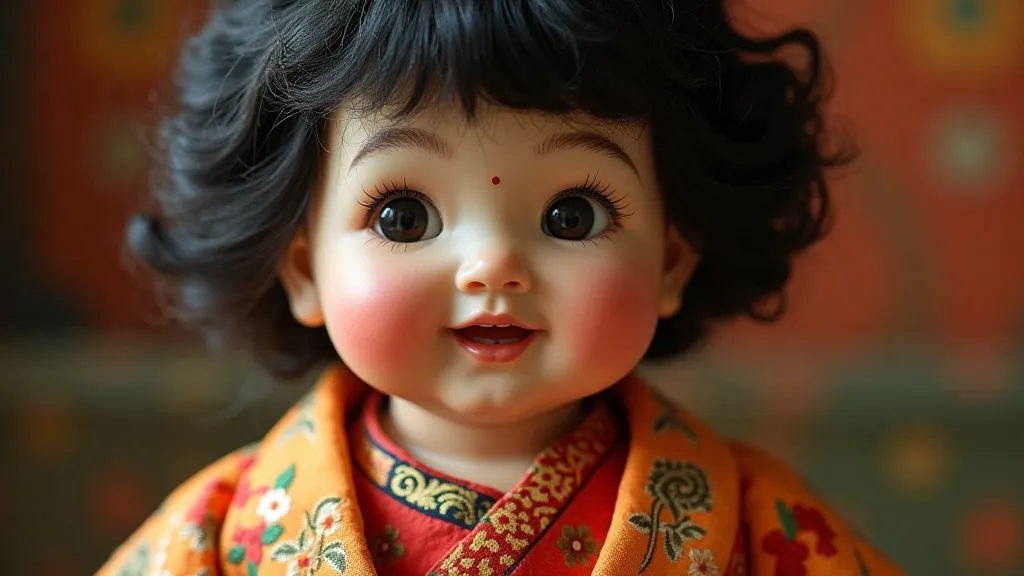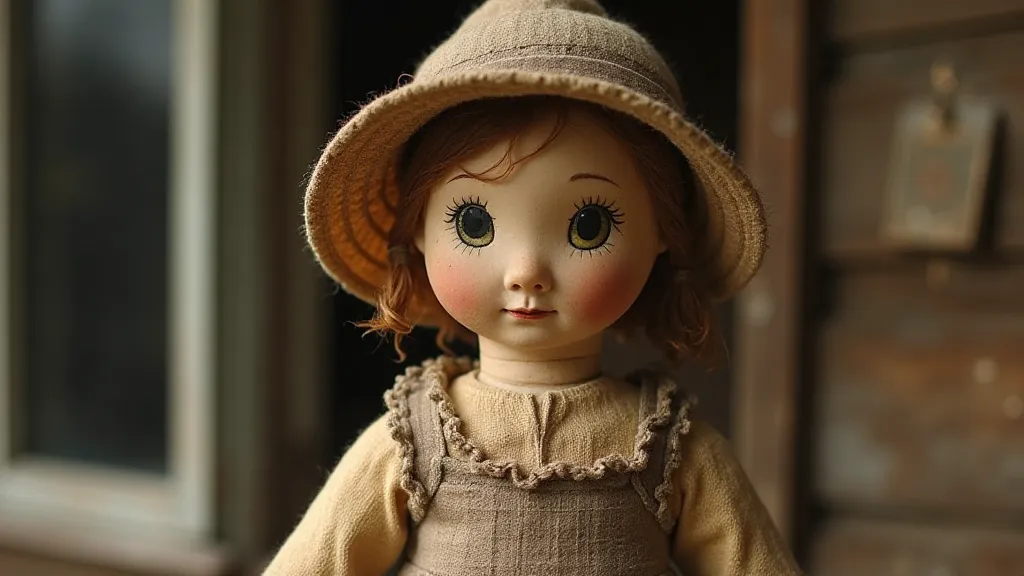The Cartography of Childhood: Mapping the Geographic Origins of Antique Dolls
The scent of aged wood and faded paint. The whisper of silk dresses. These are the sensory hallmarks of a world long past, a world encapsulated within the delicate forms of antique dolls. But beyond their inherent charm and the nostalgic tug they exert, lies a fascinating story of craftsmanship, cultural identity, and global exchange. To truly appreciate these treasured objects is to understand their geographic origins – to trace the cartography of childhood itself.
For a collector, the thrill isn’t just in acquiring a doll; it's in understanding its provenance. Where was it made? What materials were locally available? Who was the intended recipient, and what did the doll represent within their world? These questions unlock a deeper appreciation, transforming a simple toy into a portal to a specific time and place. The materials used, for instance, tell a story of resourcefulness and available technology. Consider the evolution of doll construction – from early handcrafted dolls to mass-produced figurines – it’s a tangible reflection of industrial innovation and changing societal values, a fascinating deep dive into the doll's cabinet of curiosities: unexpected materials in antique toy creation.
France: The Motherland of the Beau-Brunettes
No discussion of antique dolls is complete without acknowledging France. From the mid-19th century, French manufacturers dominated the global market. Paris, specifically, became the epicenter of doll creation. The "Beau-Brunettes," with their soulful brown eyes, elaborate hairstyles, and exquisitely detailed clothing, epitomize French dollmaking excellence. These dolls, often made of bisque porcelain, weren't just toys; they were miniature works of art.
The availability of high-quality kaolin clay, essential for porcelain production, fueled this industry. Factories like Jne Faure and Bru – names synonymous with antique doll collecting – employed skilled artisans, many of whom passed down their expertise through generations. French dolls were not inexpensive; they represented a significant investment, often purchased for wealthy families, and were passed down as cherished heirlooms. The expressions on these dolls, often serene and idealized, conveyed a specific cultural ideal, something that was carefully orchestrated through artistic skill, a key aspect of the language of the eyes: how antique doll expressions conveyed personality.

Germany: The Rise of the Papier-Mâché and Composition Dolls
While France held the early dominance, Germany quickly emerged as a significant player. The late 19th and early 20th centuries witnessed a surge in German doll production, driven by industrial advancements and the need to cater to a wider market. Unlike the often-expensive bisque dolls from France, German manufacturers pioneered the use of more affordable materials, most notably papier-mâché and composition.
These materials allowed for mass production, making dolls accessible to a broader range of families. Kämmer & Ritter and J.C. Lehner were among the most prolific German manufacturers, known for their innovative designs and surprisingly durable creations. German dolls frequently featured striking character – bold expressions and lively poses – a departure from the more serene and idealized faces often seen on French dolls. The Hitler Dolls,” while often sensationalized, represent a darker chapter, and identifying their characteristics is crucial for collectors.
The American Frontier: Shirley Temple and Beyond
Across the Atlantic, in the United States, the doll industry developed its own unique character. Early American dolls were often handcrafted, reflecting the ingenuity of settlers and the limited availability of manufactured goods. As mass production arrived, American manufacturers focused on catering to a burgeoning middle class. The Shirley Temple dolls of the 1930s remain an iconic symbol of American doll collecting, perfectly capturing the optimism and charm of the era.
However, American dollmaking extended far beyond this single icon. Regional variations were common. Dolls from the Midwest, for instance, often incorporated elements of pioneer life, while those from the East Coast reflected the influence of European styles. The use of cloth bodies, a common feature in American dolls, contributed to their affordability and durability – essential qualities for children living on the often-harsh American frontier. The fashions reflected on these dolls were more than just aesthetic choices; they were reflections of broader societal trends that constantly reshaped the world of antique dolls – exploring the ephemeral bloom: how fashion trends shaped antique doll aesthetics.
Japan: A Rising Power in the 20th Century
The 20th century witnessed a significant shift in the global doll landscape, with Japan becoming a major manufacturing hub. Post-war economic recovery fueled a thriving toy industry, and Japanese manufacturers rapidly adopted new technologies and production techniques. While early Japanese dolls often imitated European styles, they soon developed their own distinctive aesthetic – characterized by bright colors, playful designs, and a focus on affordability. The influence of Japanese animation (anime) also began to shape doll designs, leading to a generation of unique and collectable creations.

England: Rosebud Dolls and a Quiet Elegance
England's contribution to the antique doll world is often overshadowed by France and Germany, yet it possesses a unique charm. Rosebud dolls, manufactured by C.J. Rose, are instantly recognizable by their simple, slightly naive faces and sturdy construction. These dolls were designed to be durable and affordable, catering to a working-class market. While lacking the intricate detailing of French bisque dolls, Rosebud dolls possess a quiet elegance and a sense of practicality that reflects the values of Victorian England.
Beyond Rosebud dolls, English manufacturers also produced a range of cloth dolls and mohair-covered dolls, often featuring charming details like hand-stitched clothing and delicate embroidery.
Beyond the Major Players: Regional Variations and Local Craftsmanship
The story of antique dolls isn’t solely confined to these major manufacturing centers. Numerous smaller workshops and individual artisans across the globe contributed to the rich tapestry of dollmaking history. From Argentina to Australia, local craftspeople created dolls using readily available materials and reflecting the unique cultural traditions of their communities. These dolls, often less refined in their execution, hold immense historical and sentimental value, offering a glimpse into the lives of ordinary people in bygone eras. The decline of these traditional manufacturing processes and the evolution of the industry make for a compelling narrative – examining echoes of a lost industry: the decline and legacy of antique doll manufacturing.

Preserving the Legacy: Collecting, Restoration, and Appreciation
Collecting antique dolls is more than just acquiring beautiful objects; it's about preserving a vital piece of cultural heritage. Understanding the geographic origins of these dolls allows collectors to appreciate their historical context, craftsmanship, and the stories they represent. Gentle cleaning, careful storage, and, when necessary, professional restoration can help ensure that these cherished objects continue to delight and inspire generations to come.
Each crack, each faded spot, each carefully mended seam whispers a story – a cartography of childhood, meticulously mapped across continents and etched into the fragile forms of antique dolls.





